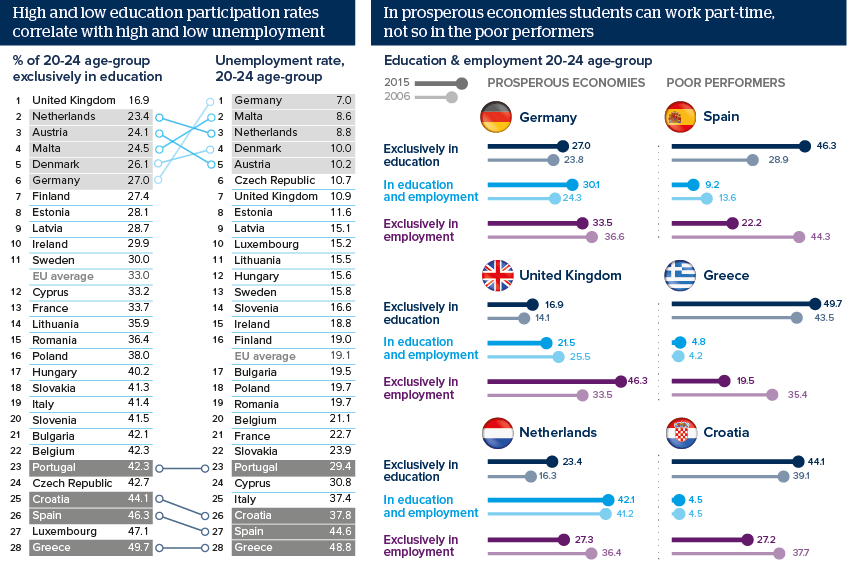Some may escape EU joblessness in tertiary education
High tertiary education rates in unemployment blackspots will not necessarily mean a more highly skilled workforce later
Source: Eurostat
Outlook
Of the six EU member states with the highest 20-24 age-group unemployment rates, four have the highest rates for full-time education. More people are now in full-time education in the EU (33.0% in 2015, from 29.7% in 2006). Yet in Spain, comparing 2006 with 2015 suggests the unemployed could be resorting to education: before Spain's recession, when unemployment was below the EU average, 29% of Spaniards were exclusively in education and 44% in full-time work; the respective figures now are 46% and 22%.
However, in Greece, 20-24 unemployment shot up from 23.8% in 2006 to 48.8% in 2015, but tertiary participation was already relatively high: 43.5% in 2006 compared with 49.7% in 2015. It also has the EU's second-highest 20-24 NEET rate (not in employment, education or training, 26.1%). Greece is hardly emerging from recession with a skilled workforce.
Impacts
- Future employability will depend on several factors including quality of teaching and resources.
- Spending on tertiary education is unlikely to be a priority in austerity; seven EU states spent less than 1% of GDP in 2012.
- A tradition of high participation in tertiary education may be due to long-term unemployment patterns or other persistent cultural factors.
- Going to college will also depend on a supportive family and the national funding system.
